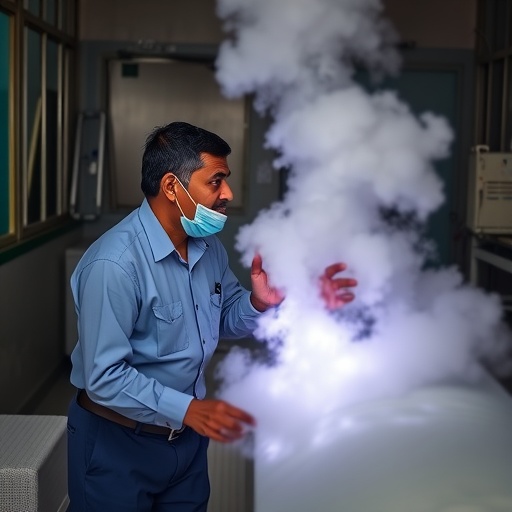
Credit: University of Georgia
Athens, Ga. – University of Georgia researchers, with colleagues from the University of Tokyo, have identified a new drug target for the two most common types of myeloid leukemia, including a way to turn back the most aggressive form of the disease. They published their findings today in the journal Nature.
By blocking a protein called BCAT1, the researchers were able to stop cancer cell growth in mice and human blood samples from leukemia patients.
The BCAT1 protein activates the metabolism of a group of amino acids known as branched-chain amino acids, or BCAAs, that are essential building blocks of proteins in all cells and thus necessary for aggressive leukemia cells to grow. The same enzymes are also responsible for the development of brain and lung tumors.
Earlier research indicated that BCAT functions to break down the BCAAs in most healthy tissues. The new paper shows for the first time that, rather than to break them down, leukemia cells use the BCAT1 pathway to produce BCAAs. By blocking the protein, researchers can reverse the disease's aggressiveness.
"We wanted to understand what is driving aggressiveness in acute leukemia, and then examine whether targeting such a pathway would reverse the disease back to the treatable phase," said Takahiro Ito, senior author on the paper and assistant professor in the Franklin College of Arts and Sciences department of biochemistry and molecular biology.
Chronic myeloid leukemia is a kind of blood cancer with three major clinical phases: a chronic phase, an accelerated phase and an acute or blast crisis phase. Chronic leukemia usually responds well to treatments with TKI drugs. But if the cancer is left untreated or resistance develops, mutations will eventually push the disease into the more aggressive blast crisis phase, which is often fatal.
"The idea was that these indolent and aggressive leukemia cells have different ways of using nutrients such as amino acids, which regulate the balance between differentiation and cell growth," Ito said. "If we can understand what regulates that balance, we may be able to harness the pathway, to stop the disease progression or revert it back to a less aggressive disease."
By analyzing blood and leukemia cells from both the indolent chronic phase and more aggressive blast crisis phase, the research team observed higher concentrations of the BCAAs in the aggressive phase. What was unclear was whether the presence of BCAAs was a consequence or a cause leading to the more aggressive phase.
They identified one gene, BCAT1, encoding for an enzyme that can produce BCAAs in the leukemia cells.
The team used a knock-down approach to inhibit the function of the gene, to determine BCAT's importance in the aggressive phase, testing the approach in mice and human blood samples from patients with leukemia.
By blocking the BCAT1 gene, the research team was able to promote differentiation in the blast crisis cells, making the disease less aggressive and slow growing, similar to the treatable chronic phase.
Importantly, although BCAT1 is high in leukemia cells, normal blood cells show low BCAT1 levels, and normal blood cells showed little impact by the BCAT1 inhibition.
These findings suggest that BCAT1 may be an ideal therapeutic target that does little harm on normal blood production. Furthermore, results indicated that BCAT1 is also a key player in acute myeloid leukemia, which is more prevalent than the blast crisis chronic myeloid leukemia. Patients with AML with high BCAT1 tend to survive less than those with low BCAT1. Blocking the BCAT1 activity also proved effective on human acute myeloid leukemia cells.
"The classical view is that no cells are known to produce BCAA by themselves–it is taken from the food we eat, always utilized as is or to be broken down inside the body," Ito said. "But leukemia cells actually take advantage of this enzyme, use the metabolic reaction in reverse to make BCAAs for their favor–for cell growth and progression to the more aggressive state."
###
The researchers worked with colleagues at the Complex Carbohydrates Research Center Nuclear Magnetic Resonance facility, the UGA Cancer Center, the College of Veterinary Medicine, and the University of Tokyo in Japan.
An online version of the full study is available at http://www.nature.com/nature/journal/vaop/ncurrent/full/nature22314.html
Media Contact
Takahiro Ito
[email protected]
706-542-0197
@universityofga
http://www.uga.edu
Original Source
https://news.uga.edu/releases/article/researchers-harness-metabolism-to-reverse-aggressiveness-in-leukemia/ http://dx.doi.org/10.1038/nature22314





